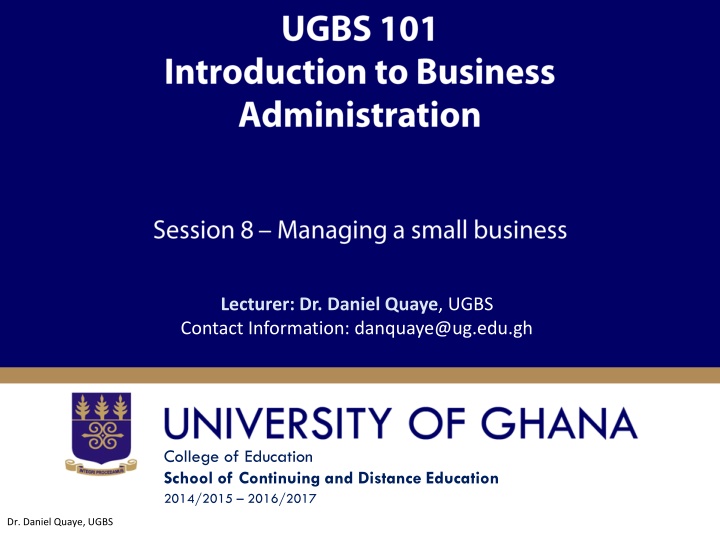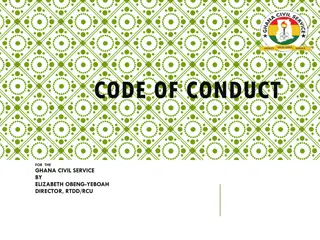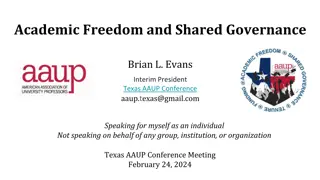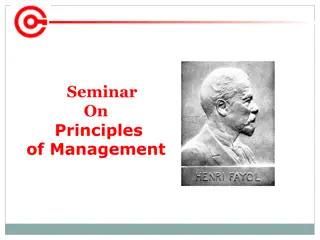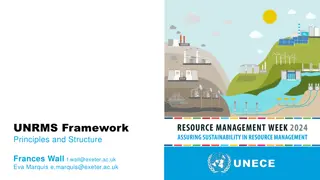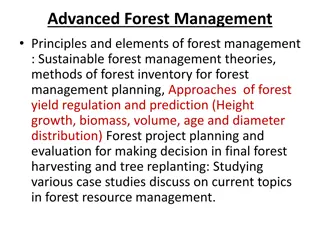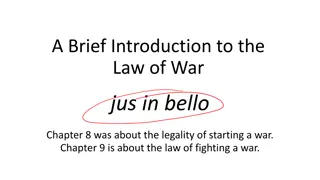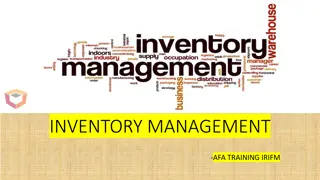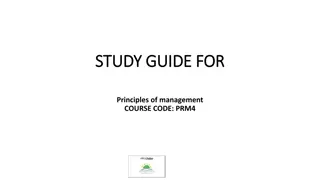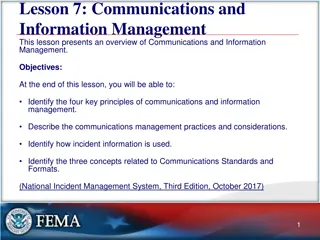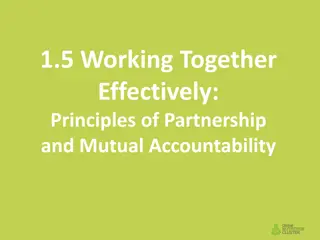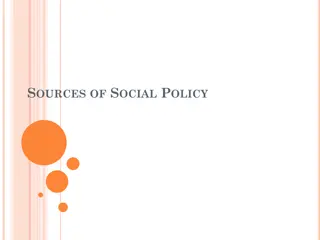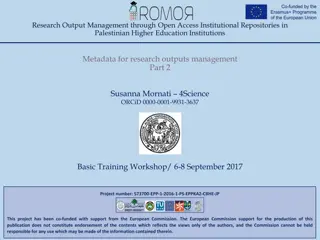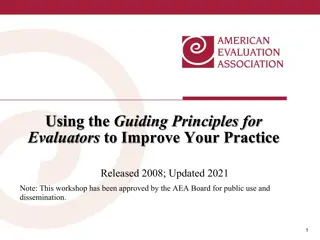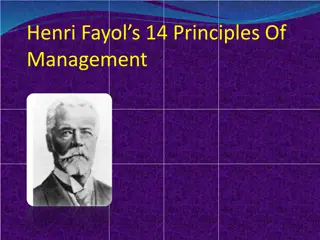Management Principles
This informative content delves into key aspects of management such as planning, organizing, and leadership as presented by Dr. Daniel Quaye from UGBS. Explore the importance of planning, different types of planning, organizing resources effectively, and the role of leadership in influencing employees towards achieving common goals.
Download Presentation

Please find below an Image/Link to download the presentation.
The content on the website is provided AS IS for your information and personal use only. It may not be sold, licensed, or shared on other websites without obtaining consent from the author.If you encounter any issues during the download, it is possible that the publisher has removed the file from their server.
You are allowed to download the files provided on this website for personal or commercial use, subject to the condition that they are used lawfully. All files are the property of their respective owners.
The content on the website is provided AS IS for your information and personal use only. It may not be sold, licensed, or shared on other websites without obtaining consent from the author.
E N D
Presentation Transcript
Lecturer: Dr. Daniel Quaye, UGBS Contact Information: danquaye@ug.edu.gh College of Education School of Continuing and Distance Education 2014/2015 2016/2017 Dr. Daniel Quaye, UGBS
What is Management? Initiate and coordinate the use of all available resources efficiently. effectively to enable the enterprise achieve its goals. Slide 2 Dr. Daniel Quaye, UGBS
1. Planning Definition: Planning involves setting goals and objectives and then deciding what needs to be done to achieve them. Slide 3 Dr. Daniel Quaye, UGBS
Reasons for planning To improve your ability and performance as a manager. To reduce the probability of mistakes. To help create blueprints for managing growth and change. To help you achieve a growth rate that is neither too fast nor slow. To enable you measure and compare your operating results performance standards. Slide 4 Dr. Daniel Quaye, UGBS
Types of planning a. Long range b. Short range Slide 5 Dr. Daniel Quaye, UGBS
Make time for planning Employee participation in planning a. b. Delegate Solicit employees ideas Slide 6 Dr. Daniel Quaye, UGBS
2. Organizing Definition: The process of arranging resources to carry out the organization s plans. Dr. Daniel Quaye, UGBS
Structuring a Business involves: a. Dividing its work in a logical way. b. Deciding how best to coordinate the many work activities that need performing. This requires deciding: Slide 8 Dr. Daniel Quaye, UGBS
What tasks need to be carried out How those tasks should be grouped into jobs How best to group those jobs to form larger groups of jobs Slide 9 Dr. Daniel Quaye, UGBS
3. Leadership Definition The process of influencing (or controlling) employees to direct their efforts towards achieving a common goal. Slide 10 Dr. Daniel Quaye, UGBS
Leadership styles a. The autocratic style Centralizes authority and does not involve others in decision-making. b. The democratic style Delegates authority, involves employees in decision- making, and encourages employee participation and a free flow of communication. However, the leader makes it clear all along, he/she has the final say. Slide 11 Dr. Daniel Quaye, UGBS
Cont. Leadership styles c. The laissez-faire style Leads by taking the role of a consultant, providing encouragement for employees ideas, and offering insights and opinions when asked. d. Participative Management A company that has a regular system for involving its employees in decision-making. Slide 12 Dr. Daniel Quaye, UGBS
4. Controlling The process of monitoring progress toward organizational objectives, resetting the course if objectives change, and correcting deviations if objectives are not being attained. Slide 13 Dr. Daniel Quaye, UGBS
Types of control a. Preliminary Control b. Concurrent Control c. Feedback Control Slide 14 Dr. Daniel Quaye, UGBS
Reading list Introduction of Business Administration Distance Education Manual- Dr Daniel Quaye. Madura, Jeff (2007), Introduction to Business Administration, South-Western College Slide 15 Dr. Richard Boateng, UGBS
